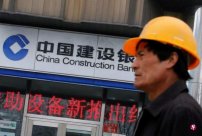The People's Bank of China announced that the foreign exchange deposit reserve ratio was reduced from the current 6%to 4%.Analysts believe that the move is to alleviate the pressure of RMB depreciation, but this cannot reverse the current situation that is not optimistic.
The official website of the People's Bank of China posted news on Wednesday (September 1). In order to improve the ability of foreign exchange funds for financial institutions, it was decided that from September 15 this year, the foreign exchange deposit reserve ratio of financial institutions was 2 percentage points., That is, the foreign exchange deposit reserve ratio is lowered from the current 6%to 4%.
Reuters quoted Zhang Jian, the chief foreign exchange strategist of Ruisui Bank of Asia, analyzed that the central bank's regulating reserve rate for foreign exchange deposits was to reduce financing costs and relieve the pressure of the renminbi.Decade trend.
Affected by factors such as the sharp upside down of China -US's spreads, weak China's macroeconomic trend, and seasonal Chinese -funded Hong Kong stocks and exchanges, the exchange rate of the RMB against the US dollar has depreciated by about 5%this year.One of Asia's worst currency.
After the central bank announced the reserves of foreign exchange deposit reserve, the offshore RMB's exchange rate on the US dollar rose straight from the 7.28 mark, and rose to 7.27, 7.26, 7.25 and 7.24.The daily rebound was 400 points, and the increase was narrowed. As of 10 am, the offshore RMB exchange rate of the US dollar was reported to 7.25.
On the other hand, in order to boost the sluggish real estate market and the weak economic economy, the five major state -owned banks in China and a number of commercial banks collectively lowered the deposit interest rate on the same day, trying to relieve the continuous decline in profit margins to the bank to the bankOperating pressure.



